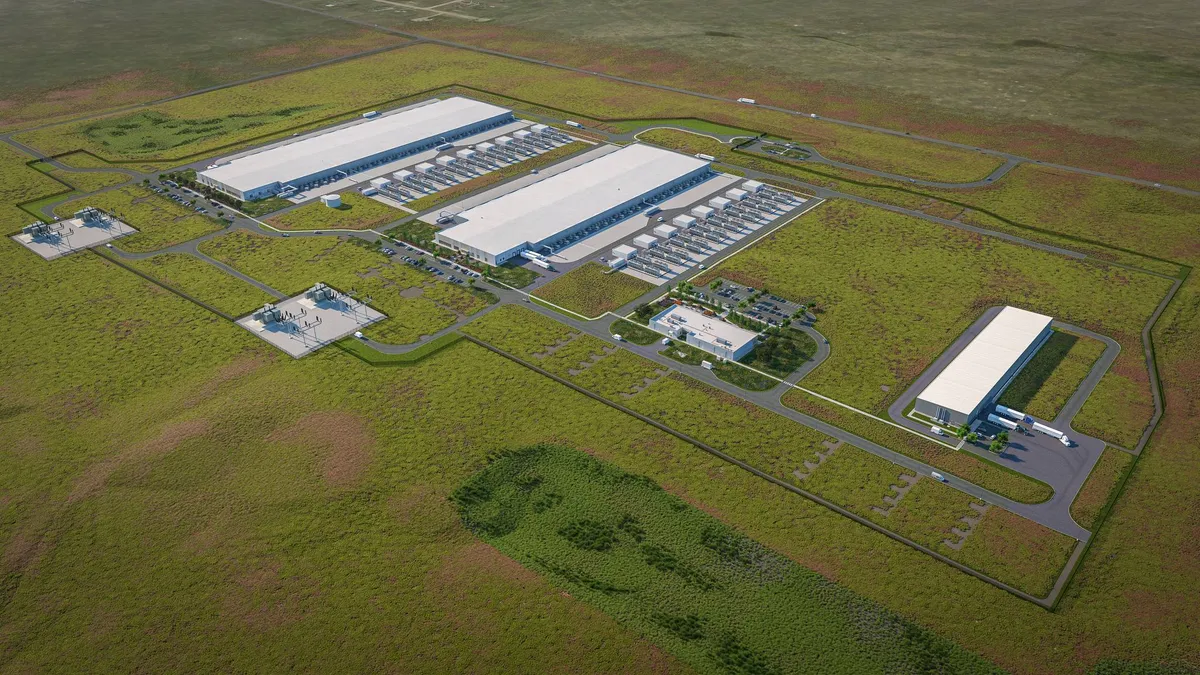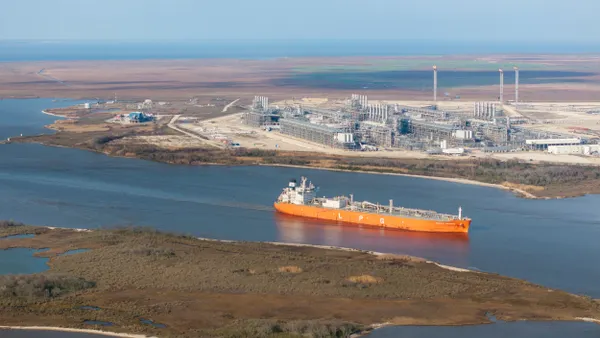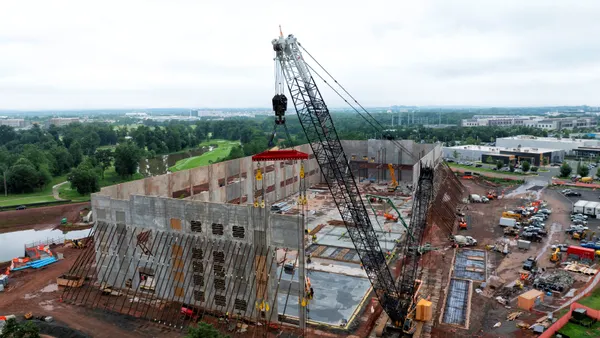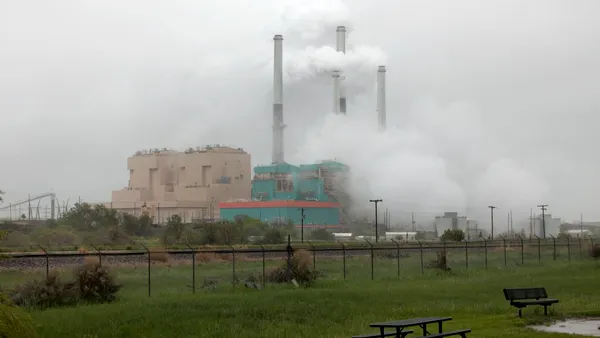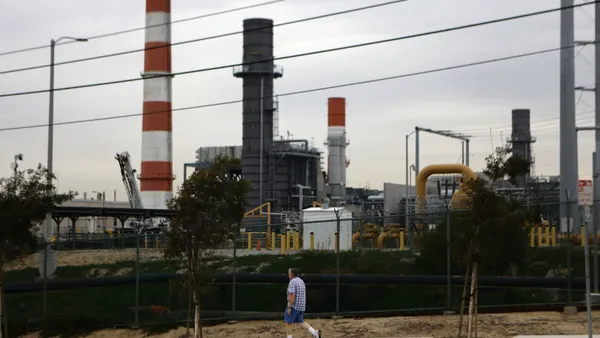Dive Brief:
- The White House wants to deploy 300 GW of net new nuclear capacity by 2050 and have 10 large reactors under construction in the U.S. by 2030 while expanding domestic nuclear fuel supplies, according to an executive order President Trump signed Friday.
- Trump signed three other orders on Friday to accelerate Nuclear Regulatory Commission reviews of reactor license applications and reconsider strict NRC radiation limits; expand departments of Energy and Defense roles in nuclear power plant licensing and siting; and speed up deployment of new test reactors.
- Nuclear power advocates hailed the orders as a boon for the industry, but warned that staff cuts at NRC and DOE could slow progress. A representative for the Union of Concerned Scientists said the proposed reforms would make the public less safe.
Dive Insight:
Shares of publicly-traded advanced nuclear and reactor fuel companies soared on Friday, suggesting investors see Trump’s orders as more than just words on paper.
Oklo, the advanced reactor developer previously chaired by Energy Secretary Chris Wright, was up more than 20% since Friday afternoon. Oklo’s shares got another boost Tuesday morning as it announced a design and development partnership with Korea Hydro & Nuclear Power to accelerate deployment of its Aurora powerhouses.
Shares of small modular reactor developer NuScale and uranium suppliers Centrus Energy and Uranium Energy also rose more than 20% in Friday and early Tuesday trading.
Trump’s “Reinvigorating the Nuclear Industrial Base” executive order called on Wright and other cabinet secretaries to develop a national policy for spent nuclear fuel management. The order singles out recycling and reprocessing activities that could benefit companies like Oklo, which plans to build fuel reprocessing capabilities and is developing reactors that can run on recycled fuel.
Another order, “President Donald J. Trump Deploys Advanced Nuclear Reactor Technologies for National Security,” calls on Wright “to release at least 20 metric tons of high-assay low-enriched uranium into a readily available fuel bank for private sector projects operating nuclear reactors to power AI infrastructure at DOE sites.”
Congress last year banned Russian uranium imports from 2028, cutting off a key supply of HALEU in particular and adding urgency to ongoing federal efforts to expand domestic supplies.
“Reinvigorating the Nuclear Industrial Base” also calls for the DOE Loan Programs Office to prioritize support for construction of new large reactors and 5 GW of power uprates to existing reactors by 2030. It specifically mentions support for “completing construction of nuclear reactors that was prematurely suspended,” signaling possible LPO support for the completion of the two unfinished AP1000 reactors at Santee Cooper’s VC Summer site in South Carolina.
Recent changes at DOE could undermine that goal, Nuclear Innovation Alliance President and CEO Judi Greenwald said in a statement.
“Recent DOE staffing reductions and proposed budget cuts undermine the Department’s efforts and make it harder to implement these executive orders,” Greenwald said. “We urge the Administration and Congress to adequately resource and staff DOE to meet this moment.”
Greenwald said proposed NRC process changes in another executive order, “President Donald J. Trump Directs Reform of the Nuclear Regulatory Commission,” while well-intentioned, could also prove counterproductive.
“NIA has long thought it is important that NRC improve the efficiency of its activities,” she said. “However …[o]ur assessment is that NRC is already making significant progress on reform in compliance with congressional direction including the 2024 ADVANCE Act. It is in everyone's interest that this progress continue and not be undermined by staffing cuts or upended by conflicting directives.”
Greenwald added that the “effectiveness, efficiency and independence” of the NRC is essential for public confidence in nuclear power and for ongoing efforts to commercialize and export nuclear technology.
Edwin Lyman, director of nuclear power safety at the Union of Concerned Scientists, was more blunt in a statement that also criticized the administration’s proposal to involve other federal departments in nuclear reactor siting, licensing and fuel supply.
“The U.S. nuclear industry will fail if safety is not made a priority,” Lyman said. “By fatally compromising the independence and integrity of the NRC, and by encouraging pathways for nuclear deployment that bypass the regulator entirely, the Trump administration is virtually guaranteeing that this country will see a serious accident or other radiological release that will affect the health, safety and livelihoods of millions.”
Setting aside potential safety risks, involving the departments of defense and energy could cause needless confusion for nuclear technology developers, said Atomic Canyon CEO Trey Lauderdale.
“New capabilities for the Department of Defense and DOE to license and oversee projects could actually create additional red tape as companies navigate between three new potential oversight bodies instead of one,” Lauderdale said.




